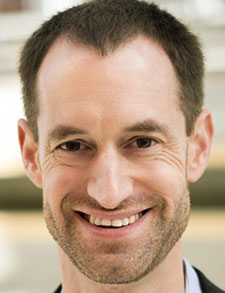 A safe, compassionate space to address the systemic nature of the problem
A safe, compassionate space to address the systemic nature of the problem
Well-being, at least in hospitalist circles, can’t mean a once-a-year yoga session.
In the view of, Swati Mehta, MD, FACP, CPXP, SFHM, vice chair of SHM’s Hospitalist Well-Being special interest group (SIG), it has to be making “compassion cool again.”

Dr. Mehta
“It is a critical, critical foundation for any initiative you deploy/operationalize as a hospitalist leader,” Dr. Mehta said. “Anything that you have to do, you have to make sure your team is ready, your team’s cup is full.”
That’s where the SIG steps in.
“When the focus is on provider wellness and well-being in general for our teams, our HCAHPS [hospital consumer assessment of healthcare providers and systems] scores go up,” Dr. Mehta said. “Our quality metrics are improved. Our medical errors go down and there is data to support that. I do believe strongly that this is a hard sign. This is not just ‘Let’s be nice to our team’ and ‘Let’s do more yoga’. This is more, ‘We have to be more intentional about it’, and this is what I feel our SIG can provide to our hospitalists.”
SIG chair Read Pierce, MD, says well-being and burnout remain a front-and-center issue four years after the onset of the COVID-19 pandemic exacerbated the feeling of overwork and under-appreciation for thousands of healthcare workers, hospitalists included.

Dr. Pierce
“I can’t think of a meeting I’ve been in, whether it’s been related directly to burnout, or practice management, or quality and safety, or patient experience, or clinical operation, or the future of the field in education, where burnout doesn’t come up in the first five minutes,” said Dr. Pierce, chief quality, safety, and transformation officer for Denver Health. “So, this is an issue we need to keep talking about and working on.”
Dr. Pierce adds that while it feels like burnout, well-being, and physician resilience have long been talked about as a priority, it’s really only in the last 10 years or so that the topic has received dedicated attention, a relatively short time in the slow-moving world of healthcare.
“I remember, even as recently as six or seven years ago, being in conversations with senior leaders of healthcare systems who said, ‘Physicians are too well compensated to complain about their work,’” he said. “People were still saying, ‘I don’t believe that this burnout thing is a real issue.’”
Dr. Pierce sees the SIG’s role as fourfold: First, it is a regular group where leaders can gather for conversations on what’s working and, maybe more importantly, what’s not. Second, the SIG brings forward specific tools or evidence-based interventions that can potentially solve member issues. Third, the SIG is a conduit to SHM for policy discussions, input on survey questions dealing with well-being, and shaping last year’s inaugural SHM well-being and burnout survey. Lastly, it’s a safe space for the kind of honest and open discussions necessary to truly address the systemic nature of the problem.
“We have created a space where we can ask people regularly, ‘What else do we need to be thinking about?’” Dr. Pierce said. “Whether it’s programming, advocacy, policy work. Whether it’s more transparent resources.”
“It’s basically a community,” said Dr. Mehta, national director of quality and performance for patient experience at Vituity and chair of SHM’s Patient Experience Executive Council. “A commiseration community of learning that shows ‘I am not alone in this.’”
Dr. Pierce acknowledges that “we don’t have a perfect playbook yet. That’s part of what this SIG has done, to try to pull together evidence-based interventions that people can use with relatively limited time and money.”
But Dr. Mehta says it’s a mistake not to try just because the problem feels too overwhelming.
“We can’t wait for perfect to happen,” she said. “That is what our SIG supports. What are the frontline hospitalists struggling with? What can they do instead of waiting for help to come from the leaders of the hospital? What can they do right now, for themselves and their peers, if they witness this problem happening? If they see their peers struggling with burnout or having compassion fatigue? How can they help out right then?”
The SIG’s offerings include Q&As, webinars, and other interactive events. Sometimes, the answer is as simple as the RISE program, which stands for Recharge, Introspect, Seek help, and Express yourself. The initiative aims for controllable steps — like a good night’s sleep or asking “What am I grateful for?” — to ground oneself.
Like everything with well-being, it’s just a start. Take the SIG itself, which had a half-dozen members a few years ago, but saw more than 100 people active at Converge 2024.
“To me, success looks like if we have accomplished more people being part of the group and realizing that we have value, and we learn from each other,” Dr. Mehta said. “Success is when this feels like it is a value add for all of our hospitalists who are struggling.”
Richard Quinn is a freelance writer in New Jersey.